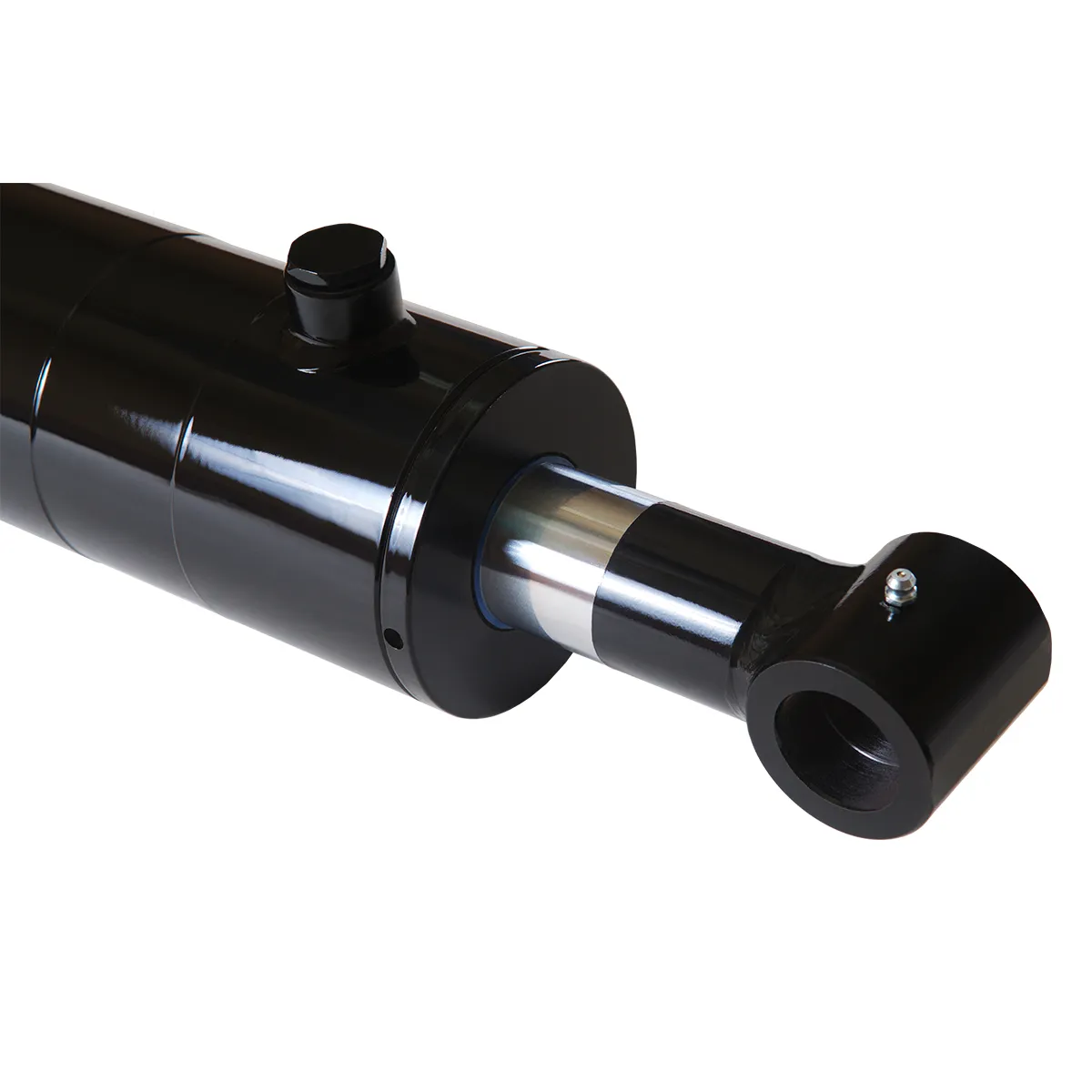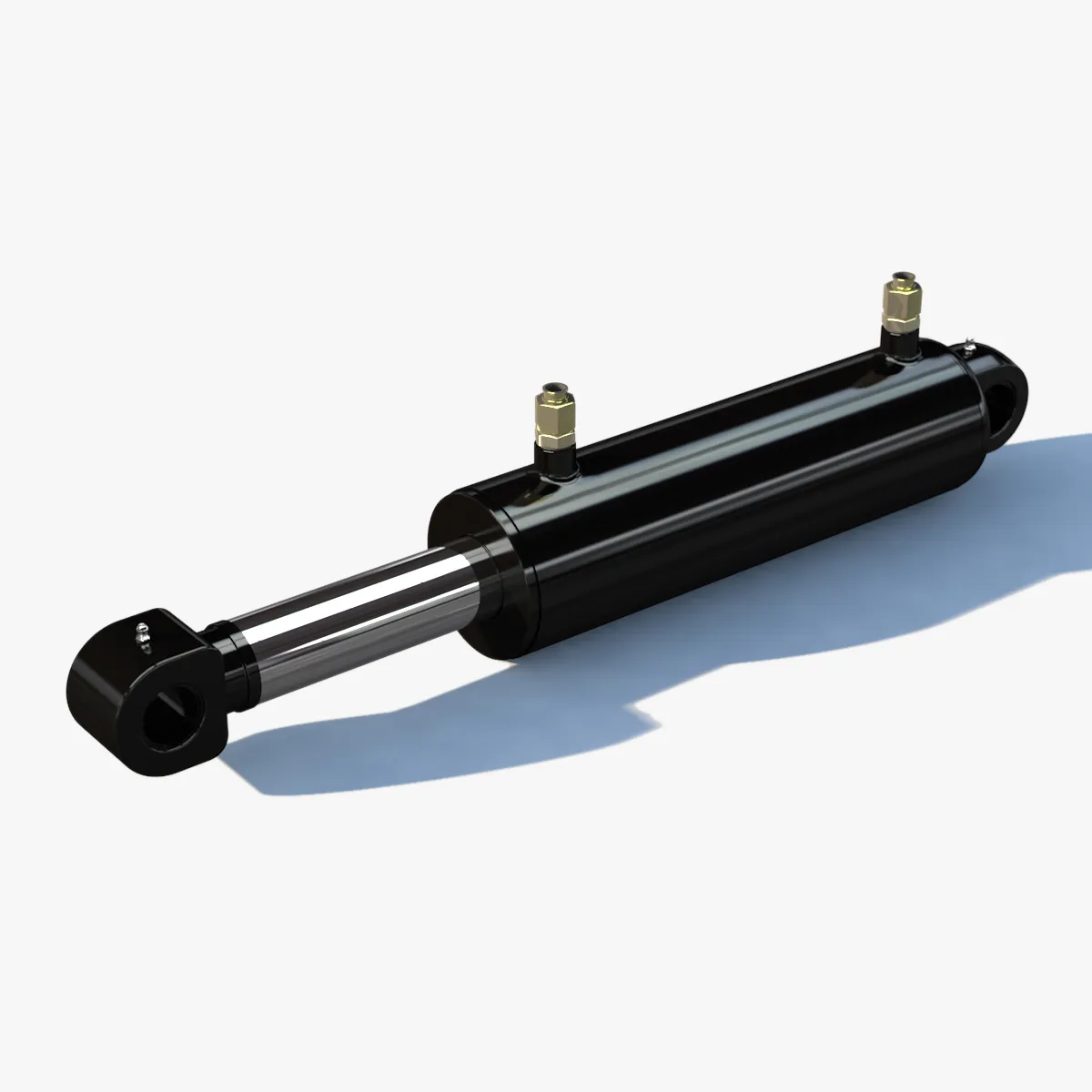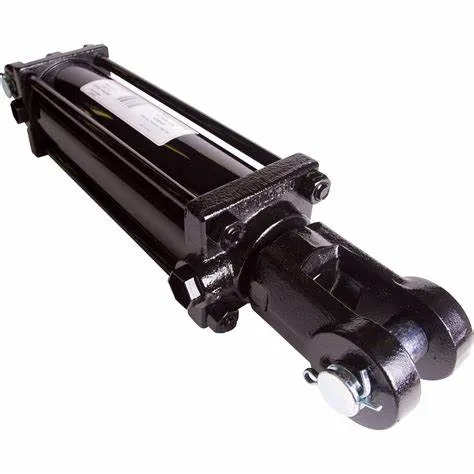The Ultimate Guide to High-Pressure Welded Hydraulic Cylinders for Public Works
Understanding High-Pressure Welded Hydraulic Cylinders
In the realm of hydraulic systems, high-pressure welded hydraulic cylinders play a crucial role in facilitating the movement of heavy loads with precision and efficiency. These specialized components are designed to withstand extreme pressure levels while ensuring optimal performance in a variety of industrial applications.
Defining High-Pressure Welded Hydraulic Cylinders
High-pressure welded hydraulic cylinders are hydraulic actuators that generate linear motion through the use of pressurized hydraulic fluid. These cylinders are constructed using high-strength materials such as steel or aluminum to provide durability and wear resistance in demanding environments.
The Principle of High-Pressure Welded Hydraulic Cylinders
The principle behind high-pressure welded hydraulic cylinders lies in the ability of pressurized fluid to transfer force to a piston, causing it to move within the cylinder. This movement creates mechanical work that can be utilized to lift, push, or pull heavy loads in various industrial settings.
Role and Application in the Hydraulic System
High-pressure welded hydraulic cylinders serve as essential components in hydraulic systems, providing reliable force generation for a wide range of applications. From construction equipment to agricultural machinery, these cylinders play a critical role in powering hydraulic systems with precision and efficiency.
Design and Construction Characteristics
Materials and Durability
High-pressure welded hydraulic cylinders are typically made of high-strength steel or aluminum to ensure structural stability and durability in high-pressure environments. These materials are chosen for their ability to withstand extreme working conditions and provide long-lasting performance.
Welded Process and Technology

The welded construction of hydraulic cylinders utilizes advanced welding technologies such as MIG (Metal Inert Gas) or TIG (Tungsten Inert Gas) welding to enhance the integrity of the cylinder. This welding process eliminates the weaknesses inherent in traditional designs, ensuring a more robust and reliable component.
Design Characteristics
Key design features of high-pressure welded hydraulic cylinders include integrated end covers, piston designs, and sealing arrangements that contribute to overall performance. These design elements are carefully engineered to optimize functionality and durability in demanding industrial applications.
Working Principle
Liquid Transfer Force
The working principle of high-pressure welded hydraulic cylinders is based on the transfer of force from pressurized hydraulic fluid to the piston, resulting in linear motion. This force generation mechanism enables the cylinder to perform mechanical work with precision and efficiency.

Sealing System and Pressure Release
High-pressure welded hydraulic cylinders utilize advanced sealing systems to prevent fluid leakage and maintain pressure integrity. The pressure release mechanism ensures safe operation and efficient performance in various industrial applications.
Types and Configurations
There are three main types of high-pressure welded hydraulic cylinders available, each with unique configurations to meet specific application requirements. These cylinders are designed to deliver reliable force generation and precise movement in a variety of industrial settings.
Top Five Advantages
Strength vs. Reliability
The welded construction of high-pressure hydraulic cylinders offers increased strength and reliability compared to traditional designs. This enhanced durability allows for higher pressure ratings and improved performance in demanding applications.
Compact Design
High-pressure welded hydraulic cylinders feature a compact design that saves space compared to traditional tie-rod designs. This space-saving nature makes them ideal for applications with limited space requirements.
Maintenance Benefits
The reduction of moving parts in welded hydraulic cylinders results in lower maintenance needs and increased reliability. This streamlined design minimizes potential points of failure and enhances operational efficiency.
Performance Characteristics
High-pressure welded hydraulic cylinders offer exceptional performance characteristics, including high strength, durability, and pressure capacity. These cylinders are designed to withstand rigorous working conditions and provide reliable force generation in industrial applications.
Flexible Application
High-pressure welded hydraulic cylinders can be used in a variety of industrial equipment, including excavators, forklifts, and agricultural machinery. Their versatility makes them suitable for a wide range of applications, meeting diverse operational needs with precision and efficiency.
Industries Where High Pressure Welded Hydraulic Cylinders Are Widely Used
High pressure welded hydraulic cylinders are commonly employed in the following industries:
- Construction: Excavators, bulldozers, cranes
- Agriculture: Tractors, harvesters
- Manufacturing: Printing presses, robots, assembly lines
Design Considerations and Selection Criteria
Bearing Capacity
When selecting high-pressure welded hydraulic cylinders, it is essential to consider their bearing capacity to ensure optimal performance and safety in industrial applications. The cylinders must be able to withstand the required loads and pressures without compromising efficiency or reliability.
Sealing and Durability
The sealing system of high-pressure welded hydraulic cylinders plays a critical role in preventing fluid leakage and maintaining pressure integrity. Durable seals and materials are essential to ensure long-lasting performance in demanding working environments.
Safety and Maintainability
Safety measures and maintenance considerations are paramount when selecting high-pressure welded hydraulic cylinders. Ensuring the safety of operators and equipment, as well as the ease of maintenance and repair, are key factors in maximizing operational efficiency and longevity.
Sealing and Lubrication
Proper sealing and lubrication are essential for the optimal performance and longevity of high-pressure welded hydraulic cylinders. These components rely on advanced seals and lubricants to prevent wear and ensure smooth operation in industrial applications.
Regular Inspection and Preventive Maintenance
To maintain the performance and reliability of high-pressure welded hydraulic cylinders, regular inspection and preventive maintenance measures are essential. By implementing proactive maintenance practices, operators can identify potential issues early and prevent costly downtime.
High-Pressure Welded Hydraulic Cylinder Installation Guide
Proper installation of high-pressure welded hydraulic cylinders is crucial to ensure optimal performance and safety. Follow these guidelines to ensure successful installation and operation of your hydraulic cylinders in industrial applications.
Maintenance Tasks
Three essential maintenance tasks for high-pressure welded hydraulic cylinders include regular inspection, proper lubrication, and seal replacement. By performing these tasks diligently, operators can maximize the lifespan and efficiency of their hydraulic cylinders, reducing the risk of downtime and costly repairs.
Safety Considerations and Environmental Factors
High-pressure welded hydraulic cylinders require strict adherence to safety measures to prevent accidents and ensure operator protection. Environmental factors such as temperature, humidity, and exposure to chemicals must also be considered to maintain optimal performance and longevity.
Fault Diagnosis and Common Problems
Common issues with high-pressure welded hydraulic cylinders include fluid leakage, seal wear, and piston misalignment. By diagnosing these problems early and implementing appropriate solutions, operators can minimize downtime and maintain operational efficiency in industrial applications.

Three Questions About High-Pressure Welded Hydraulic Cylinders
How do high-pressure welded hydraulic cylinders differ from traditional hydraulic cylinders?
High-pressure welded hydraulic cylinders offer increased strength and durability compared to traditional designs, thanks to their welded construction and advanced materials.
What materials are commonly used in the construction of these cylinders?
High-pressure welded hydraulic cylinders are typically made of high-strength steel or aluminum to ensure structural stability and durability in demanding environments.
What advantages do high-pressure welded cylinders offer in terms of strength and durability?

High-pressure welded cylinders provide enhanced strength, reliability, and pressure capacity, making them ideal for rigorous industrial applications that require precision and efficiency.
Long Tail Keywords of High Pressure Welded Hydraulic Cylinder
- High Pressure Welded Hydraulic Cylinder Durability
- High Pressure Welded Hydraulic Cylinder Performance
- High Pressure Welded Hydraulic Cylinder Maintenance
Our Company
Our company specializes in the manufacturing and distribution of high-quality hydraulic cylinders, including high-pressure welded hydraulic cylinders for public works and industrial applications. With a comprehensive product line and a commitment to excellence, we have established ourselves as a leading provider of hydraulic solutions in domestic and international markets.
Our company prides itself on professionalism, international certification, customized services, state-of-the-art production equipment, and dedicated after-sales support. We strive to meet the diverse needs of our customers by delivering reliable, high-performance hydraulic solutions that exceed expectations.
Author: lyl
